Guide to Pitigliano, Tuscany’s Hidden Gem
Pitigliano is a lovely village located in southern Tuscany. It is said to be one of the most beautiful villages located in Italy, and we can assure you that it is for many reasons.
Pitigliano is a lovely village located in southern Tuscany. It is said to be one of the most beautiful villages located in Italy, and we can assure you that it is for many reasons.
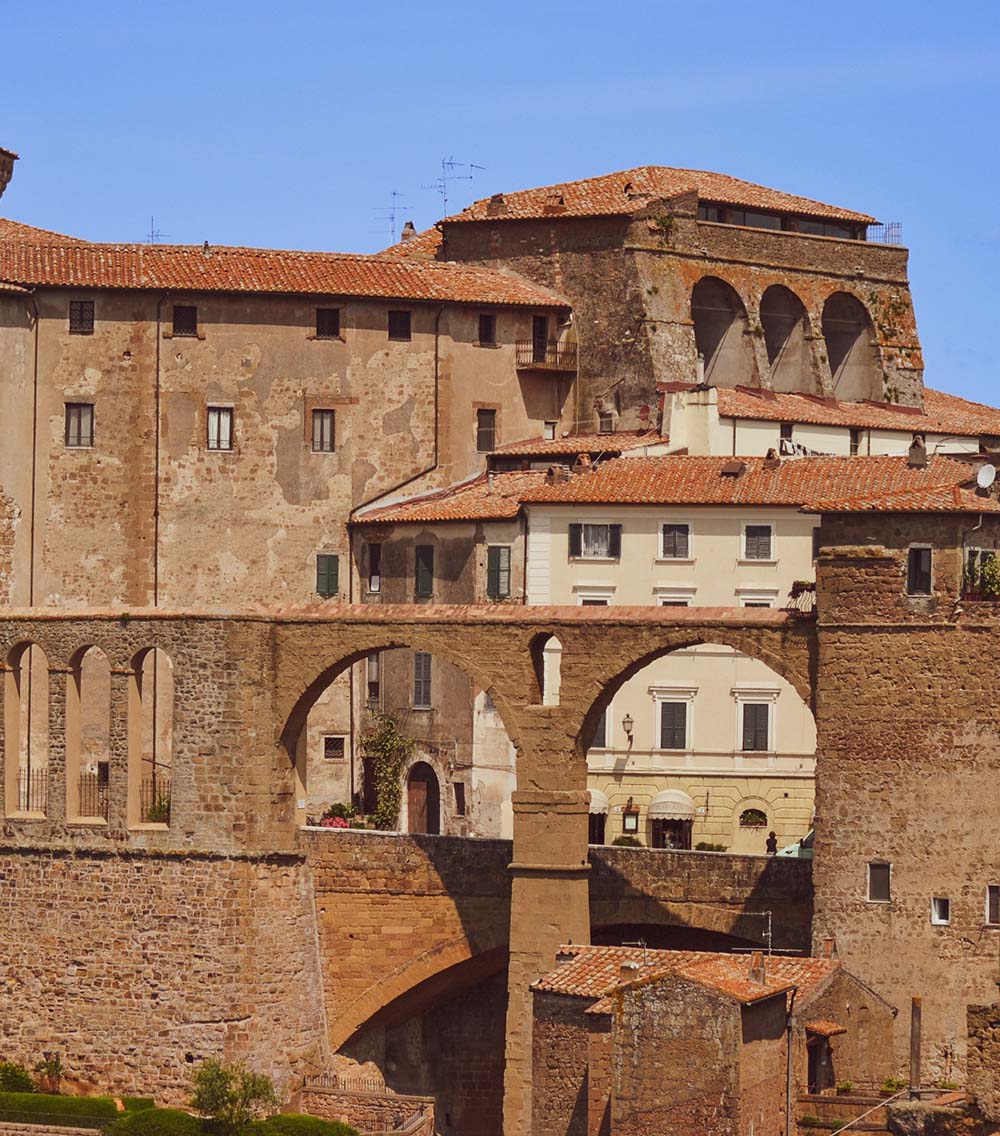
Picture a town built at the top of a hill, with many houses in warm tones, narrow streets, and greenery surroundings. Specifically, this town is built at the top of a local stone called tufo and many people call it instead of Pitigliano, Little Jerusalem, thanks to the large Jewish community it hosted within its walls in the 16th century. It’s a town worth visiting in Tuscany, so let’s discover the Guide to Pitigliano!
The creation of Pitigliano begins with the Etruscan civilization, based on the oldest relics found in the area. Etruscans were pre-Roman people who first dug the stone tufo and created buildings, a necropolis, and the imposing Vie Cave roads in the 11th century BC. It was in the 13th century when a family named Aldobrandeschi took control of the town and considered it the capital of a country for the first time. In 1293, it was the year when Anastasia, the last descendant of the Aldobrandeschi, and Romano Orsini, got married following the town to pass to the Orsini family. This alternation created a conflict with the neighboring city, Siena until the 15th century, when Siena admitted Pitigliano’s status as a county, while Pitigliano recognized Sienese domination. As the Jews face persecution in the Papal States, Pitigliano, with its independent spirit, becomes a welcoming refuge. That way, a Jewish community is created, leaving a historic cultural mark on the town. Finally, with the Italian unification in the 19th century, Pitigliano began to shape in what it is today. The Jewish community scattered, and the town highlighted its character.
You can reach Pitigliano by plane, train, or car. By having a car, you can explore the whole surrounding area, but if you prefer exploring the center of the city you will just need your feet.
Even if Pitigliano does not have an airport, there are areas having one, nearby. The closest one is the Fiumicino Airport, about 100 kilometers away, located in Rome. Alternatively, there is Galileo Galilei Airport in Pisa, approximately 180 kilometers away. Many visitors make the mistake and choosing to fly by Florence Airport, which is roughly 200 kilometers away. Keep in mind that the train journey from Florence to Pitigliano involves more connections and can take up to 4 hours. Either way, when arriving there, you can take a car or a train to reach the center of the town.
Trains traveling from Rome’s main station, Termini, take around 2 hours, with a change required at Grosseto station.
You can always bring your own car or rent one, having the chance to explore the nearby area. Several car rental companies operate at both Fiumicino and Galileo Galilei airports. The drive from Rome takes approximately 2 hours and 15 minutes, while Pisa is a 2-hour and 45-minute drive. Arriving in town you will have to park outside the walls, but there is no worry since there is a shuttle service, a bus taking you from there to the center.
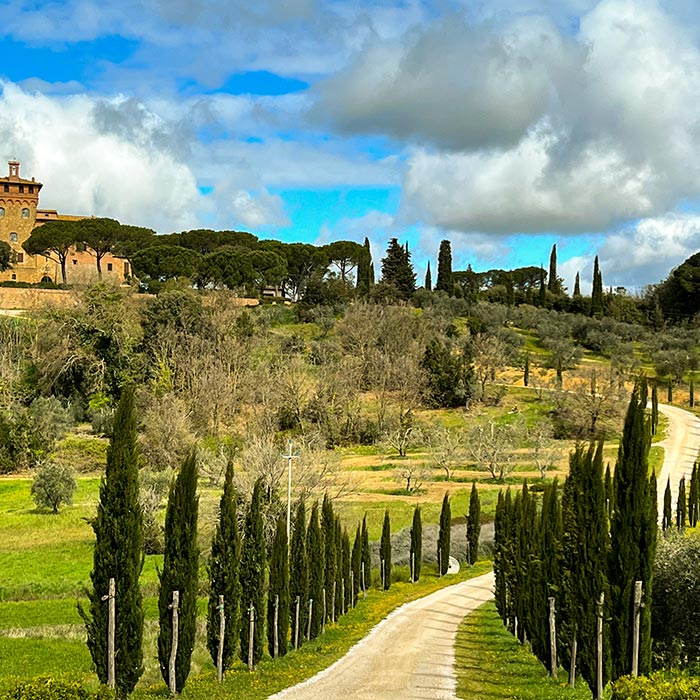
The best way to experience Tuscany is to rent your own car! We recommend booking well in advance using price comparison sites like rental cars if traveling in the peak summer season.
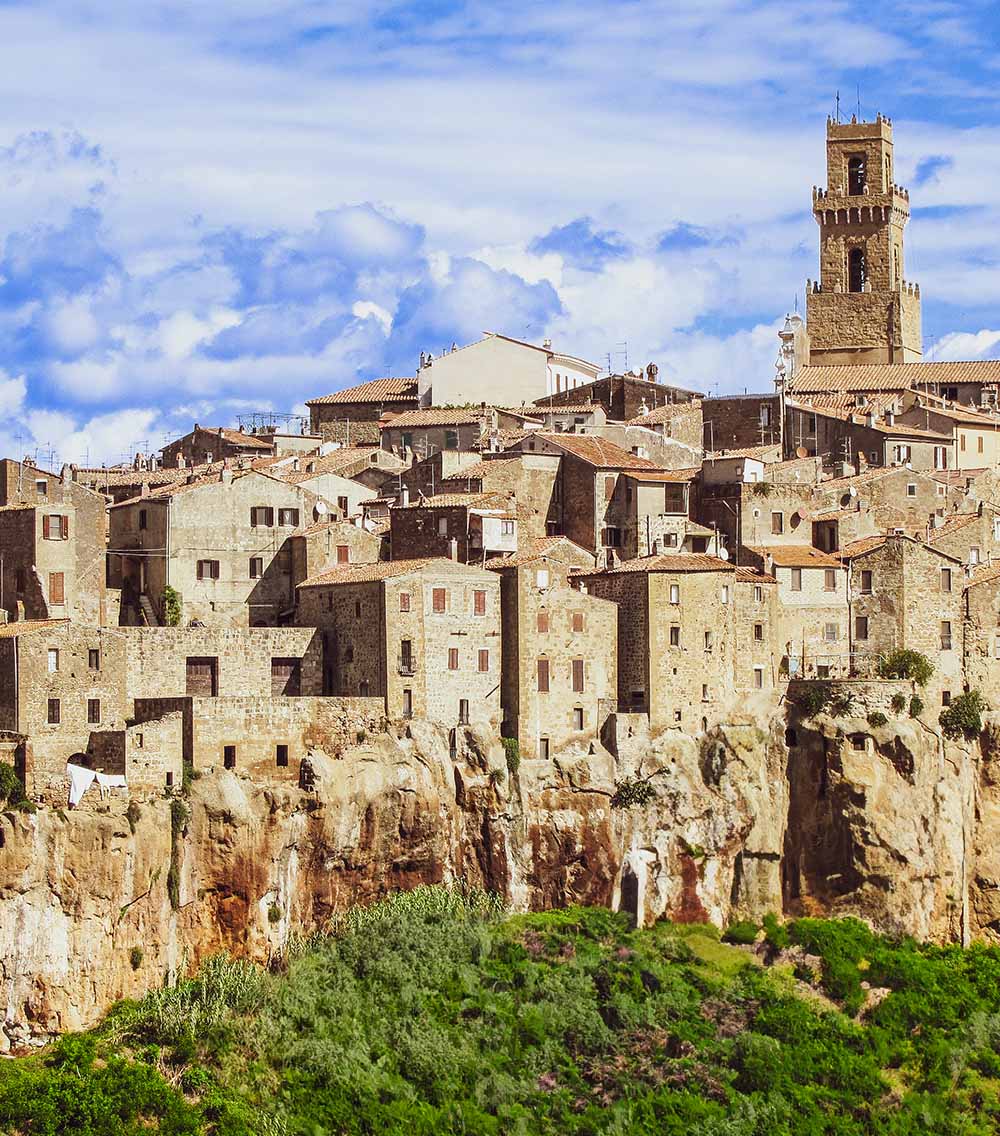
Pitigliano is a city that has the right to be called a city carved in stone, since all of it, is built into cliffs made of volcanic tuff, from ash and debris. The first civilization who lived there, the Etruscans, craved homes and caves into the rock and formed the first combination of nature and architecture there. Today, after all these years, visitors can observe the human interaction in nature, therefore we could easily say that this town is an attraction of its own.

Pitigliano is a town full of history reflected in every corner of it. Only its location, a village integrated into a stone many years ago, has a unique story to tell. It all started with the first civilization of Etruscans in the 11th century, which is today reflected by the craved caves and narrow streets still existing. A useful tip for wandering in those streets is the use of a map, which will assist you not only in navigating better but finding hidden gems highlighted in those streets as well.
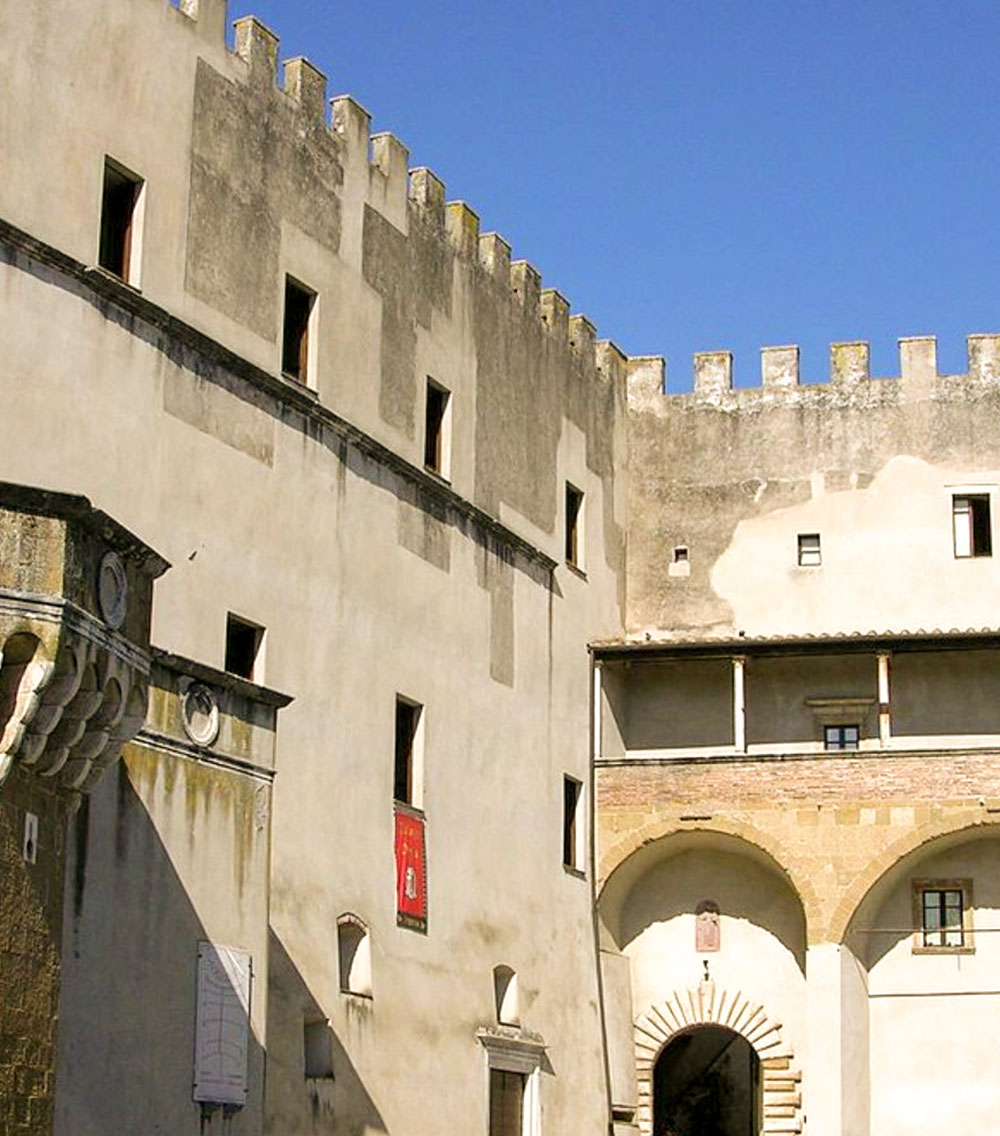
While wandering around the streets, you will meet the enormous Palazzo Orsini, the 16th-century palace serving as a residence for a powerful aristocratic family. Do not hesitate to enter it and reach the Sovana Panoramica, a terrace, where you will face the stunning view of the town and its surroundings. Take a moment to memorialize this view by taking some photos that will remind you that this place is real. You will easily understand why this town was considered a powerful fortress by watching clearly, its position, built inside the tufo stone. The entrance to the palace requires a small price range from 2 to 3.50 euros.

A museum hosted inside the Palazzo Orsini was founded in 1995 to honor the first-ever civilization, the Etruscans. The museum includes over 2000 remains of the Etruscans including jewelry, pottery, bronzeware, and sarcophagi. Artifacts, created between the 6th and 7th century BC, refer to the creativity and innovation of that era. Divided into six sections, the museum shows how Etruscans stated the creation of these things and the way that they evolved during the centuries. The opening hours are from Tuesday to Sunday, from 10 am to 6 pm, while the entrance fee is €4 for adults, €2 for children under 12, and free for children under 6.
As we previously said, Pitigliano has also been given the name of Little Jerusalem due to the Jewish people living there in the 16th century. Jews were forced to leave the Papal States and homes and seek refuge elsewhere. Pitigliano as a welcoming town agreed to host them. Over the years, The Jewish community became part of the town, enhancing not only the economy but the culture as well. During World War II, the Nazi occupation had a devastating impact on the Jewish community. However, Pitigliano still honors the Jewish memory by embracing the synagogue, the museums, the Ghetto, and some festivals keeping the traditions alive.
The Jewish Museum is located above the synagogue and is the structure where people used to worship their religion. Today, it stands as a place holding artifacts used in Jewish rituals and daily life, such as menorahs, prayer shawls, and religious texts.
The Synagogue was the heart of the Jewish community back in 1598. That part of the town was destroyed due to a cliff collapse, but it was instantly restored. Today is open to the public and people can admire it and the wall paintings that it holds.
The Ghetto was created in the 17th century by the Medici family, and it was the place where the Jewish people lived. Walking inside the Ghetto is the best option to feel the past everyday life. You will meet the remains of the kosher butcher shop, the oven used for baking Matzah bread, and the ritual bath called Mikveh.
The above sites are usually booked to be seen together and usually have a ticket range from 2 to 5 euros.
Pitigliano is a town full of history and culture reflecting on the town itself but also in the civic museums that it hosts. Museo Civico Archeologico is a museum inside the Palazzo Orsini honoring the Etruscans. It exhibits artifacts and shows how daily life was back then. The entrance is 4 euros for adults and 2 for kids. A must-see in Pitigliano is the Museo Palazzo Orsini. Inside the walls of the Orsini palace, it showcases the building’s rich history and the life of the aristocratic Orsini family. Not only the wall paintings and the furniture, but every little detail in that place shows how the everyday life of this family was. The entrance fee here is between 2 and 3.50 euros. Museo Geopaleontologico is another museum of high regard, hosted inside the Palazzo Sadocini. It is the ideal one to learn about the geological and paleontological history of Pitigliano. You will learn about the details of minerals, rocks, and fossils, all essential for the existence of this small town. The price for this one comes to 4 euros per person.
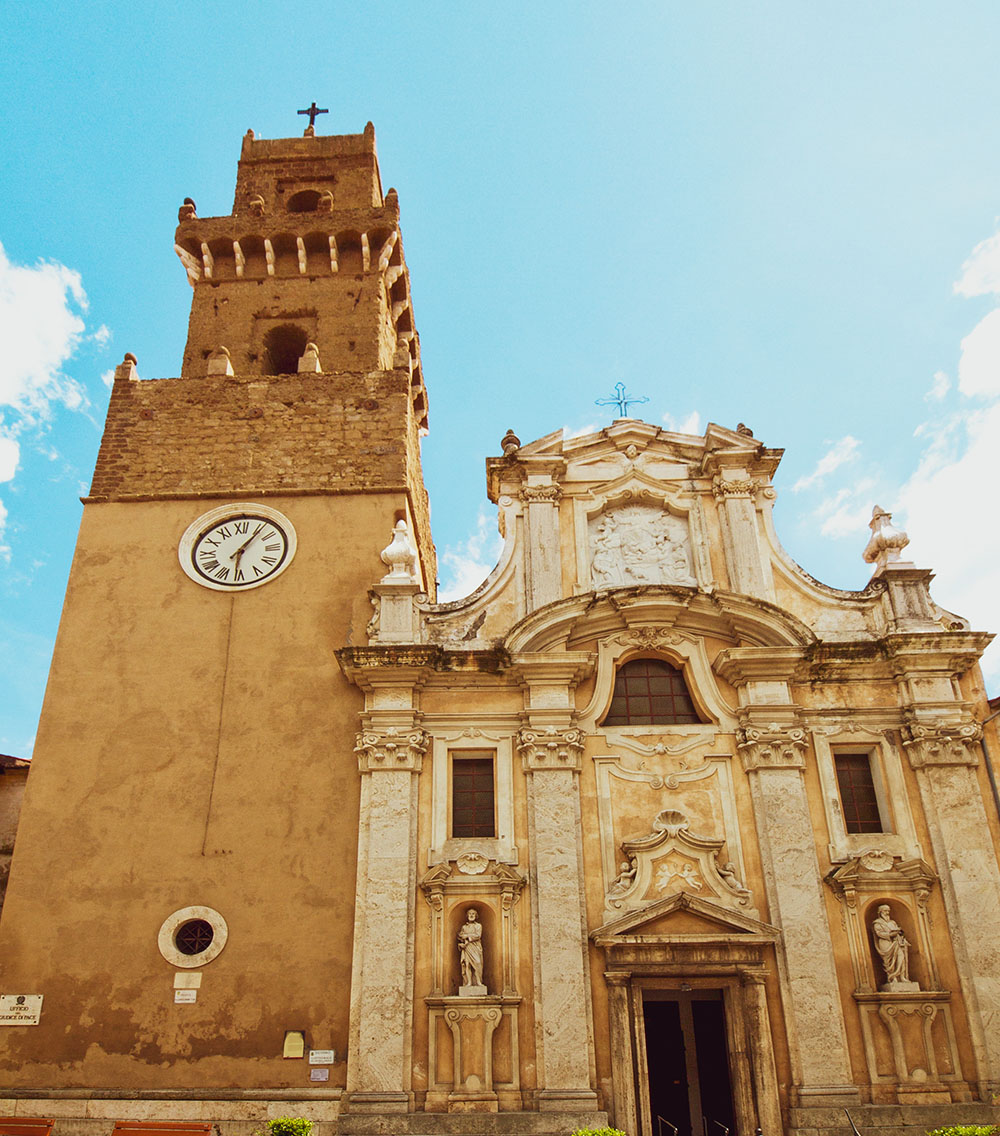
Duomo di Pitigliano also known as the “Cattedrale dei Santi Pietro e Paolo” is a significant landmark located in the heart of the town. It was first created in the 11th century and underwent many transformations through the years. The ones that stood out were the creation of the Bell Tower in the 16th century and the Baroque elements that were added in the 18th century. Today, it stands as a structure with a magnificent facade holding Romanesque elements and a Bell tower standing as a symbol of the Duomo’s glory. Inside, you can observe that the Baroque style still exists, combined with pieces of paintings and sculptures. A notable artistic gem is The Madonna del Rosario by Francesco Vanni which Pitigliano‘s residents are very proud of. The Duomo is generally open from 8 am to 7 pm every day, but it might vary depending on the season. The entrance is free, allowing visitors to appreciate its architectural beauty.
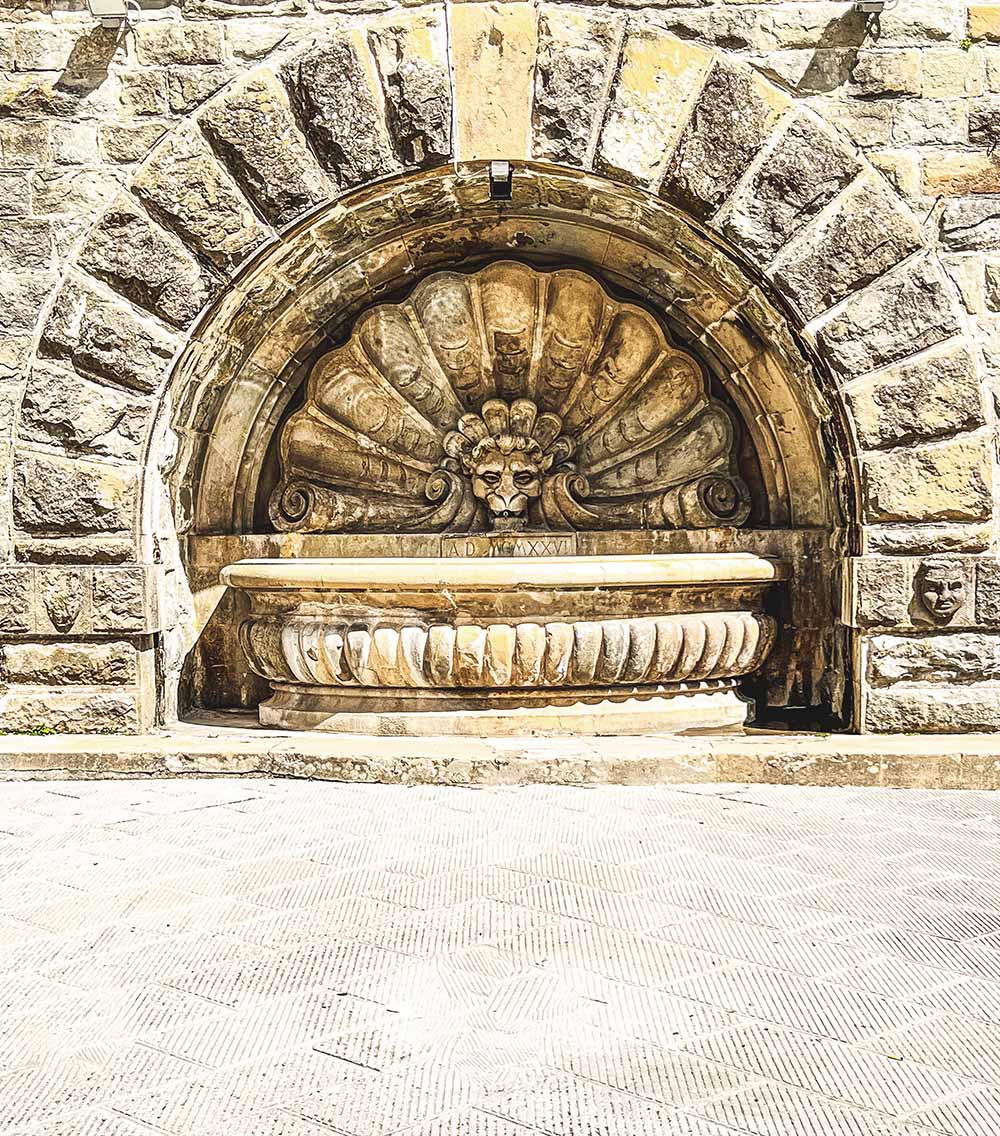
Chiesa di Santa Maria e San Rocco is one of the oldest churches of Pitigliano, created in the 12th century. It was in the 15th century when the church underwent a significant transformation reflecting the style of that time. The church is dedicated to two saints, Santa Maria and San Rocco, the patron saint of plague victims. The church has in general an elegant yet simple style. However, some elements have Romanesque character and also incorporate Renaissance touches. Besides the calming atmosphere, the quiet, and the amazing sculptures that hold it, a notable piece of art you cannot miss seeing is the painting of the Madonna and Child, believed to date back to the 16th century. The church is usually open from morning to evening, and it is completely free.

Acquedotto Mediceo or Medici Aqueduct is the place for you to admire the human ingenuity and the power that water holds. It is an achievement implemented years ago and still shows how people in those days managed to make good use of raw materials like water. Its primary purpose was to address the lack of water combined with the increase of the towns’ population. The most admirable part of it, except its use, is the series of 15 arches, gracefully spanning the ravine. Its location is just out of the town, and it is easily accessible on foot or by car. The nearby area also offers a great opportunity of walking or hiking and admiring the surroundings.
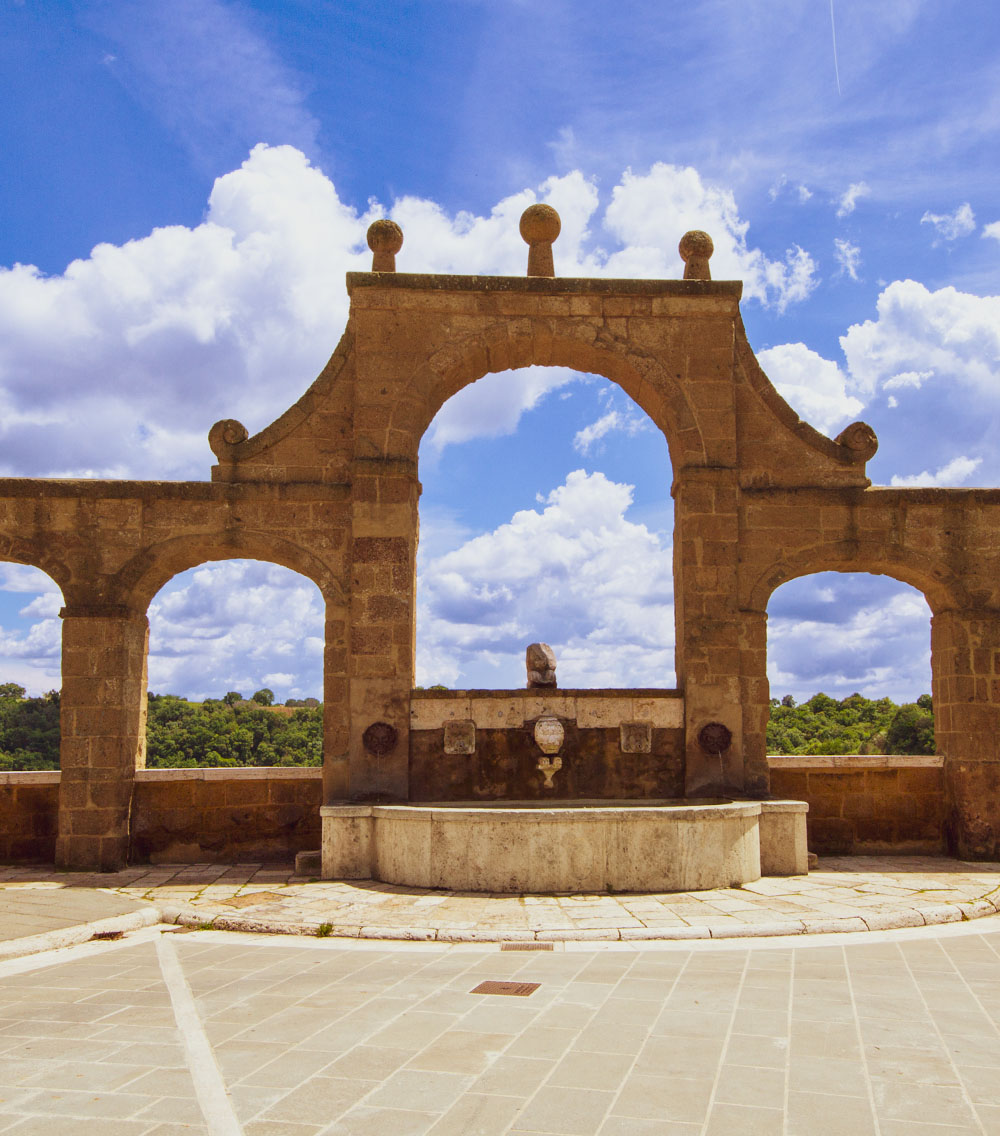
Fontana delle Sette Cannelle also known as Fountain of the Seven Spouts was built in the 16th century and stands till today as a notable landmark of the town. It is a monument built to celebrate the water abundance in the time that the Medici family ruled. The most admirable element of it is the tree arches made of the local tufa stone. The seven spouts result out of the seven spouts of the fountain, providing the residents with water. Each one of the spouts is decorated uniquely with intricate carvings. Located in the center of the town, a visitor can easily admire it on foot.
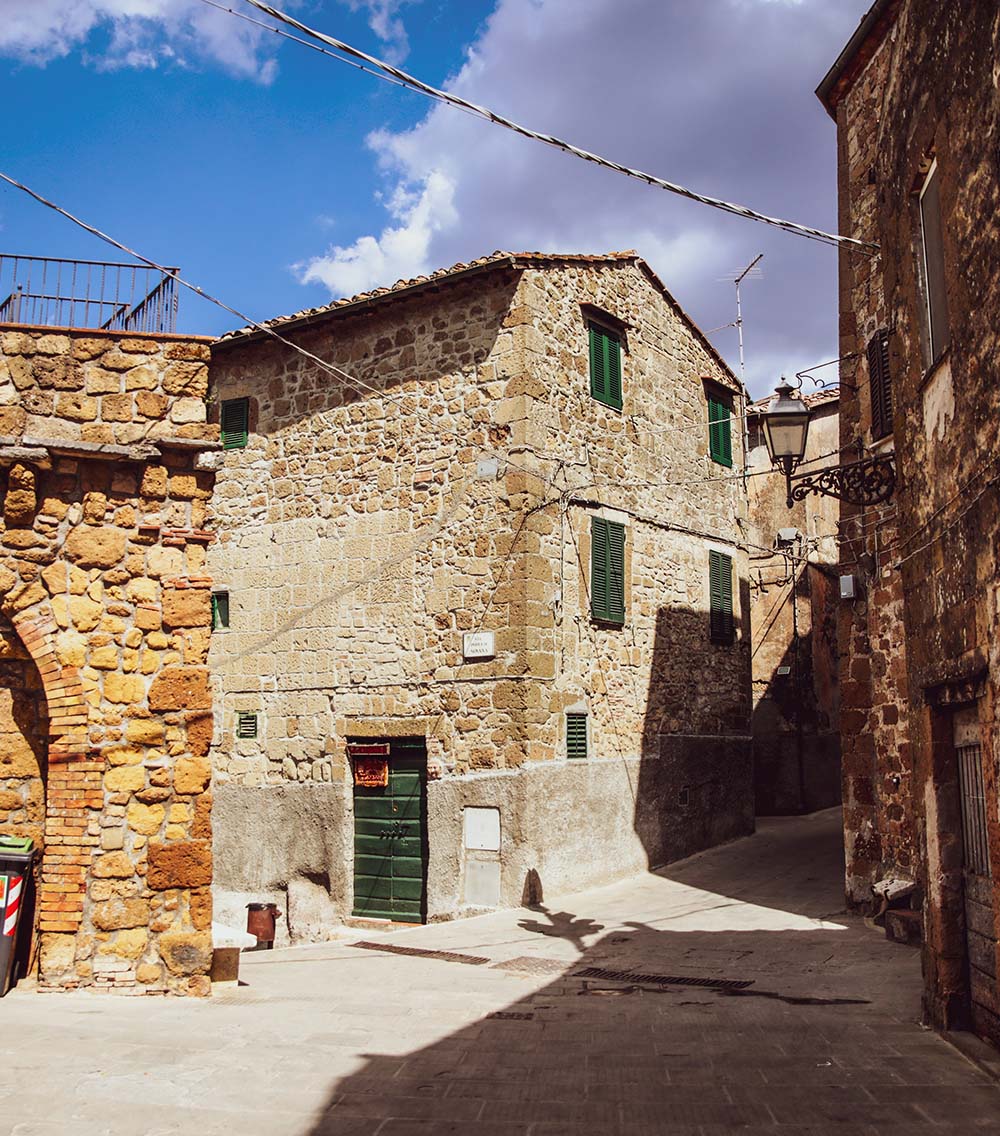

Vie Cave consists of the enigmatic paths that Etruscans have made in the past. These paths have been carved into the tufo rock for centuries and are waiting for you to explore them. It is said that they are significant since they hold a strategic meaning between the Etruscan settlement. The reason for their creation, though, does not stop there, since they were ideal as a defense mechanism in periods of conflict. The Vie Cave forms a complex labyrinth of paths, leading to the hills surrounding Pitigliano. They vary in depth and width, and some of them reach up to 20 meters in depth. Via Cava di Fratenuti is one of the most popular paths, offering a great view of the countryside. A shorter and well-preserved one is the Via Cava di San Giuseppe, ideal for anyone who does not have a lot of time to explore. For someone seeking a challenge, the Via Cava del Poggio Cani is a more difficult path, surrounded by lush vegetation.
Pitigliano is indeed a magnificent place to be visited, but what makes it special is the existence of small towns near it that can be easily visited. One of them is Sovana, an outdoor museum that exhibits the Etruscan history. It hosts an ancient necropolis holding rock-cut tombs and its medieval walls. Besides that, there was a Jewish community living there back in time. Sorano is another small town holding the Orsini fortress, narrow historic streets, and medieval walls. If seeking an even more relaxing atmosphere, Manciano is your place. A small town with agricultural tradition holding Monti dell’Uccellina National Park. Located near the beaches, Capalbio is a medieval town offering a calming and quiet atmosphere. Once in a year, this town hosts a competition called Palio dei Butteri a thrilling horse race.
Alberto Manzi Outdoor Archeological Museum is located at the south of Pitigliano, on the road to Saturnia. The museum primarily focuses on Etruscan history and archaeology, meaning cemeteries and sunken roads. It includes sights such as the Necropolis of Gradone which was created in the 7th century BC and the Necropolis of San Giovanni created in the 6th century containing several tombs carved into the tufa rock. It is a great opportunity to not just hear about Etruscans but see with your own eyes the life that they created and better understand their culture. The opening hours vary in every season, but the entrance is free. Since there are vie cave paths, some narrow and a bit difficult to cross, make sure to wear comfortable shoes and bring water along.
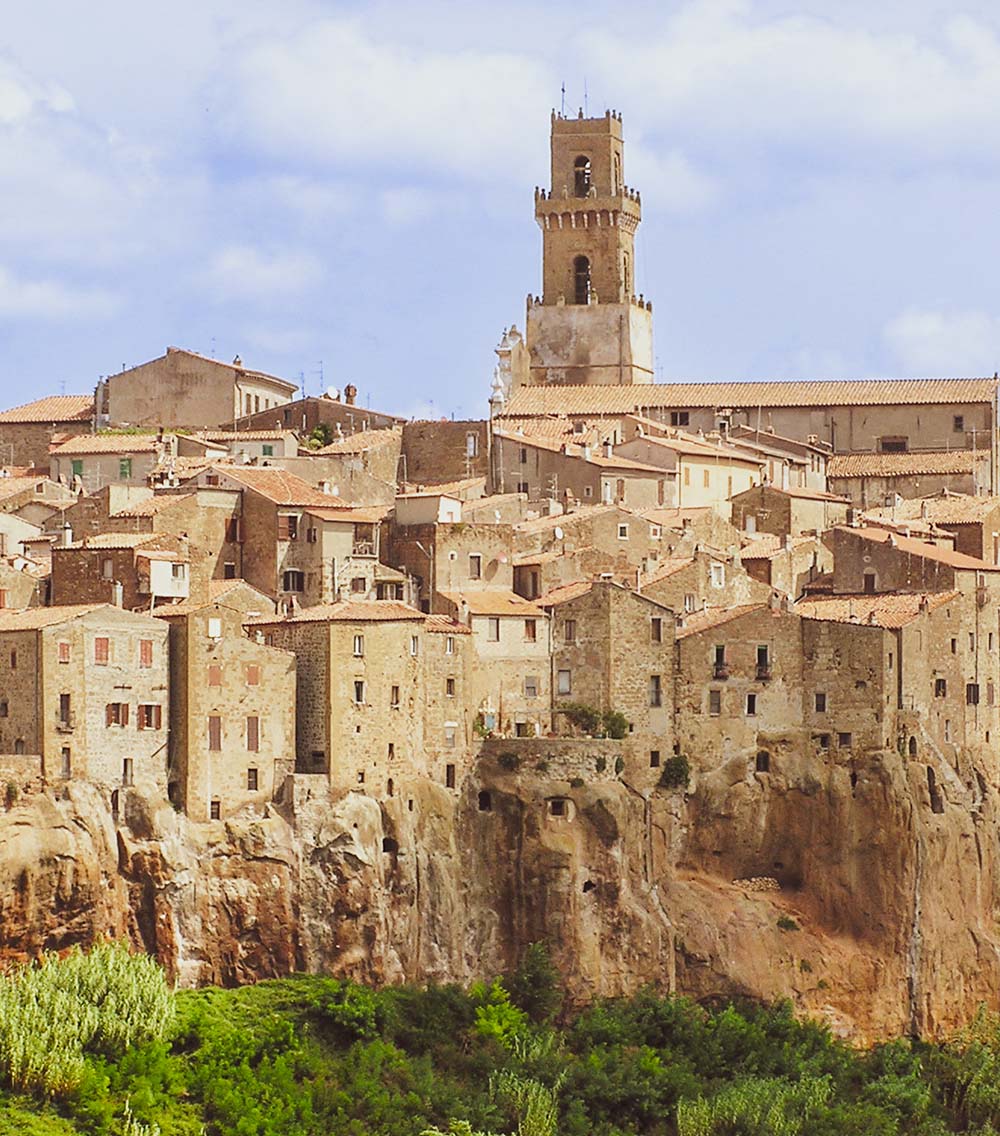
Visiting the town of Pitigliano is a great experience, but there are many places to see on your next-day trip around it.
Sovana is a great place to wander and get information about the Etruscan culture and history. You will get yourself getting absorbed into history and medieval character by observing small unnoticed things or some more admirable like the Necropolis of Poggio Etrusco. The carved tombs into tufo stone are proof showing the kind of practices this civilization used. As Pitigliano hosted the Jews, the surrounding area did so. There is a Jewish Quarter in Sovana showing the habits of this community and their habits.
Sorano, a small town which is located on the top of Tufo Cliff, is an unforgettable place to visit. The panoramic view, narrow streets, and traditional italic piazzas offer a great chance to take some photos. Do not miss the chance to visit the Orsini fortress, a building made to defend the town. For walking lovers, Vie Cave is your spot. Wander around the narrow, sunken paths traveling in the past. Last, but not least, is a visit to the Church of San Rocco, a medieval church adorning the town with its impressive Renaissance facade.
You cannot visit Pitigliano without visiting Saturnia. Saturnia is also called Thermal Paradise. Bathe in the warm, flowing waters of the Cascate del Mulino, surrounded by a beautiful natural landscape. Except for their stunning beauty, these Thermal waters are also known as spa resorts, offering a variety of treatments and wellness programs.
What you don’t see every day is a lake created inside a volcano, a place not to miss. Lake Bolsena is the largest volcanic lake in Italy. Do not miss the chance to enjoy a boat tour on the crystal-clear waters, explore the charming lakeside towns, for a price between €20-€50 per person, or simply relax on the beach. The lake also offers water sports like kayaks, windsurfers, or paddleboards with a cost between €10-€20 per hour.

Pitigliano hosts an amazing, tasteful cuisine with fresh, local ingredients, showcasing the generosity of Tuscany. When it comes to local products, Pitigliano is well known for its local vegetables, hand-rolled pasta, and juicy meats. The extra virgin Olive oil is the heart of their cuisine. Used over salads, in pasta sauces, or simply enjoyed with crusty bread, the olive oil offers a flavor explosion. Wild Herbs and Mushrooms are also very popular in Potigianos cuisine, since they are easily found on the top of every hill. Usually, they accompany each plate, upgrading it. Plates you cannot miss are the Pici, which is some kind of pasta but thicker, and you can find them everywhere in town or Tortelli Maremmani, also pasta stuffed with different incidents and then dressed with a butter and sage sauce.
For the cold months or the lovers of hot plates, acquacotta, a traditional Tuscan soup, is a perfect example of using simple ingredients to create a flavorful dish. Pitigliano couldn’t forget the meat lovers, that’s why there is Cinghiale, meaning Wild Boar often served in stews, ragùs, or grilled, and of course agnello scottadito meaning tender lamb chops, grilled to perfection.
Trattoria Il Grillo: Located in the heart of Pitigliano Trattoria Il Grillo offers a warm and inviting atmosphere, perfect for a cozy dining experience. The menu holds traditional Pitigliano dishes obtaining fresh, seasonal ingredients. Some of the most popular dishes included are pici al ragù di cinghiale or torta al cantuccio, a pie filled with ricotta cheese, vegetables, and sometimes sausage. An average meal could cost somewhere between €20-€40 per person.
Il Caveau Restaurant Pitigliano: An atmospheric restaurant, located in a historic cave, hold a menu that showcases innovative takes on Tuscan classics. The restaurants’ dedication to quality and presentation with local, fresh, ingredients has earned it an outstanding reputation, making Il Caveau Restaurant a must-visit even for the most difficult visitors. You can expect a range of €43-€100+ per person depending on your dining choices.
Hosteria di Pantalla: Try this restaurant if you want to have an unforgettable taste journey combined with a friendly, warm atmosphere. Hosteria di Pantalla has a menu with traditional Tuscan dishes, ensuring simple yet tasteful dining experience. Do not miss the chance to try some of the local cheeses and cured meats combined with Tuscan, local wines. A full meal accompanied by a glass of wine could cost €20-€40 per person.
Pitigliano offers different options when it comes to accommodation, based on every preference or budget. You can choose amongst villas, hotels, Agriturismo, and B&Bs each one of them offering a unique experience.
Hotel La Fortezza is a boutique hotel offering a stunning view of the greenery surroundings. It features an elegant atmosphere, a rooftop terrace jacuzzi, and comfortable rooms. A stone-build creation with rooms quite large, related to their price. It’s located near Del piazza, with central heating and a bathroom in each room. Some rooms have a double bed, and others have two single beds. The price is about €170 per night.
If you are seeking a more peaceful stay in Pitigliano, Agriturismo Il Poggio Di Teo is the best place for you. A place surrounded by olive groves and vineyards, offers comfortable rooms, a swimming pool, and a restaurant serving local cuisine with fresh ingredients. It is considered a place, ideal for families since it also holds a playground and free private parking. You can take advantage of various spa and wellness services there, and its location is perfect for hiking and cycling in the nearby area. The prices in Il Poggio di Teo are approximately 150 per night.
Otherwise, Agriturismo Poggio Al Tufo is a place surrounded by vineyards, about a 15-minute drive from Pitigliano town center. This working farm offers an outdoor pool, free WiFi, and a traditional restaurant. Also, there is wine is produced on-site. Poggio Al Tufo, is a place holding classic, traditional style, free parking, and a buffet with sweet and savory plates. Ideal for a family visit. Its price ranges from 120 to 190 euros.
A more budget-friendly option could be a stay in a B&B, such as Il Conventino, an ideal place if traveling alone, with your other half or your family. Il Conventino is a pet-friendly place, holding parking a kitchen, and a balcony in each room. It is located outside the walls of the town yet close. The price comes to 83 euros per night.
Maremma Nel Tufo is a family-run B&B 2 km away. from the center of Pitigliano and is located on a farm surrounded by vineyards and olive groves. All rooms and apartments feature rustic style, include a fully equipped kitchenette and dining area. A sweet buffet breakfast is served daily in the breakfast room. In the outdoor pool area there are chairs, tables and sunbeds. The garden around the pool has a furnished patio and a free barbecue. You will also find a shared washing machine. The price per night there is about 100 euro.

If you are seeking a calm place, full of history, with hiking paths and good wine and cuisine, Pitigiano is your place. Known as one of the most beautiful villages in Tuscany.
Pitigliano is known because it is built on a cliff with a labyrinth of streets, traces of Etruscans, and a rich Jewish heritage. An authentic Italian escape.
The highlights of the town can be seen in a day since it is a small town. If looking for relaxation and further exploration in the nearby area a week would be ideal.
The Fortress of Pitigliano is also known as the Palazzo Orsini. It is the most prominent landmark and historical attraction in the town.
In summer months Pitigliano hosts outdoor cinema knights. Otherwise, there are often events taking place celebrating the saints or local products.
AROUNDART WildLife photographers’ “Treasures” is an event taking place in Pitigliano on 25 June and showcases wildlife photography.
The Torchlight Procession of Saint Joseph, hosted in mid-August, involves a procession with giant torches, celebrating the harvest and fertility. It has pre-Christian roots and is considered Pitigliano’s most traditional festival.
Le Cantinelle is a celebration of local wines and food products, often featuring tastings and other festivities taking place at late September.
Pellegrini Gas & Bike is a family-run shop that offers rentals of mountain bikes and e-mountain bikes. They are located a short distance from the center, and they are open from 9:00 AM to 1:00 PM and 4:00 PM to 7:30 PM and closed on Sundays.
Maremma Ebike is located near Sorano and rents electric bikes. This could be a good option if you’re interested in a longer electric bike ride in the area. It is open from 8:00 AM to 1:00 PM and 2:00 PM to 8:00 PM.
Via Cava di Poggio Cani – Via Cava di Fratenuti: This is a 4-kilometer distance route that takes you through a network of ancient Etruscan cave roads carved into the tufa rock. The trail offers stunning scenery while learning about history.
La Fontana dell’Olmo – Via Cava Di San Guiseppe: A moderate 3.8-kilometer route that also explores vie cave. This trail leads to a beautiful natural spring Fontana dell’Olmo and offers stunning views of the surrounding countryside.
Pitigliano is a town offering interesting history, stunning landscapes, and tasteful local cuisine. You can try them all in a weekend. Begin your day by grabbing a coffee and exploring the inside of the town like the Orsini palace, the narrow streets, and the churches. Take a break to try the local cuisine and then wander around the beautiful paths or even better you can go cycling. The second day is a good chance to admire the town’s walls and have a small walk. Do a little research for events that might be happening on that day or book a cooking class where you can learn to create local dishes. End your weekend with dinner on a restaurant’s terrace, at night where you can admire the view of the town and its surroundings.




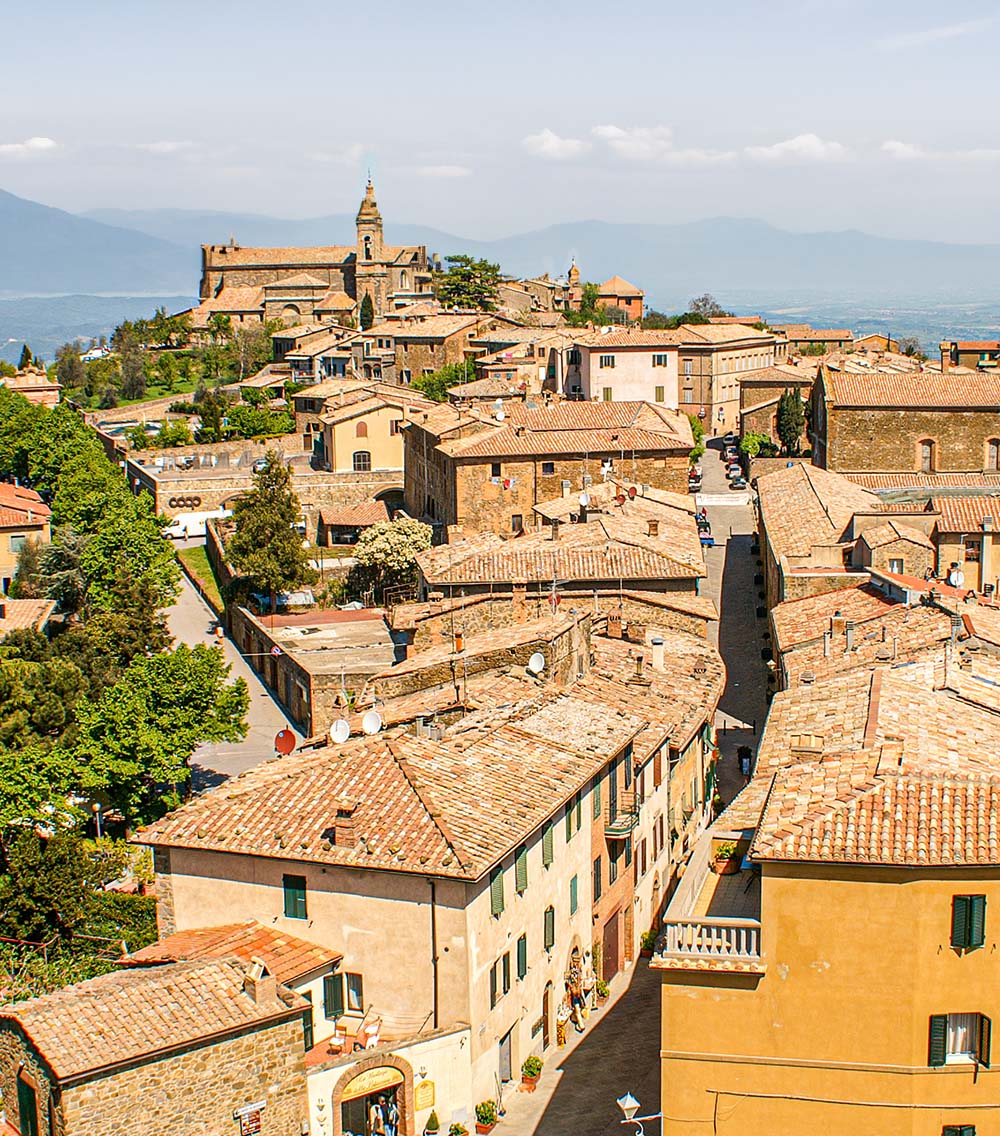
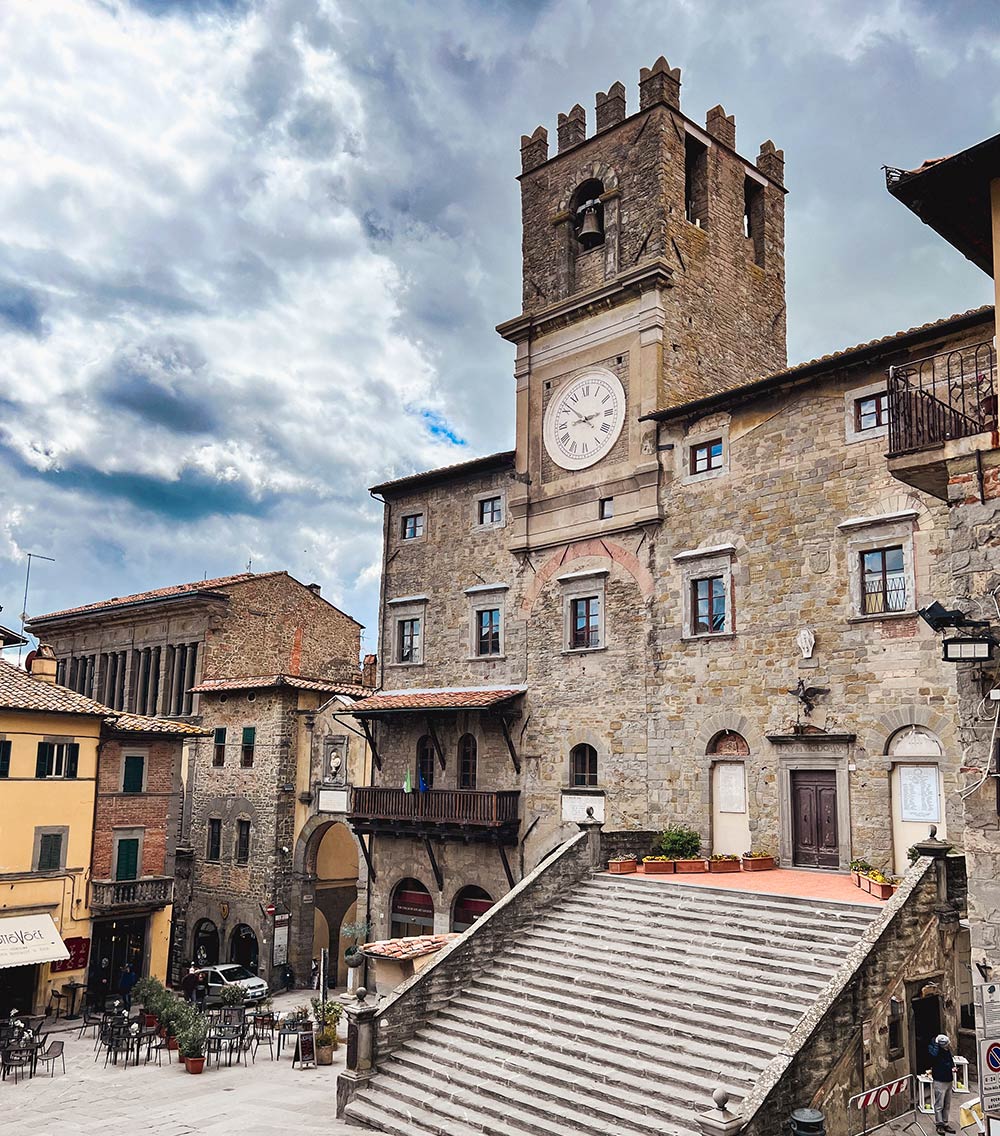
No Comments